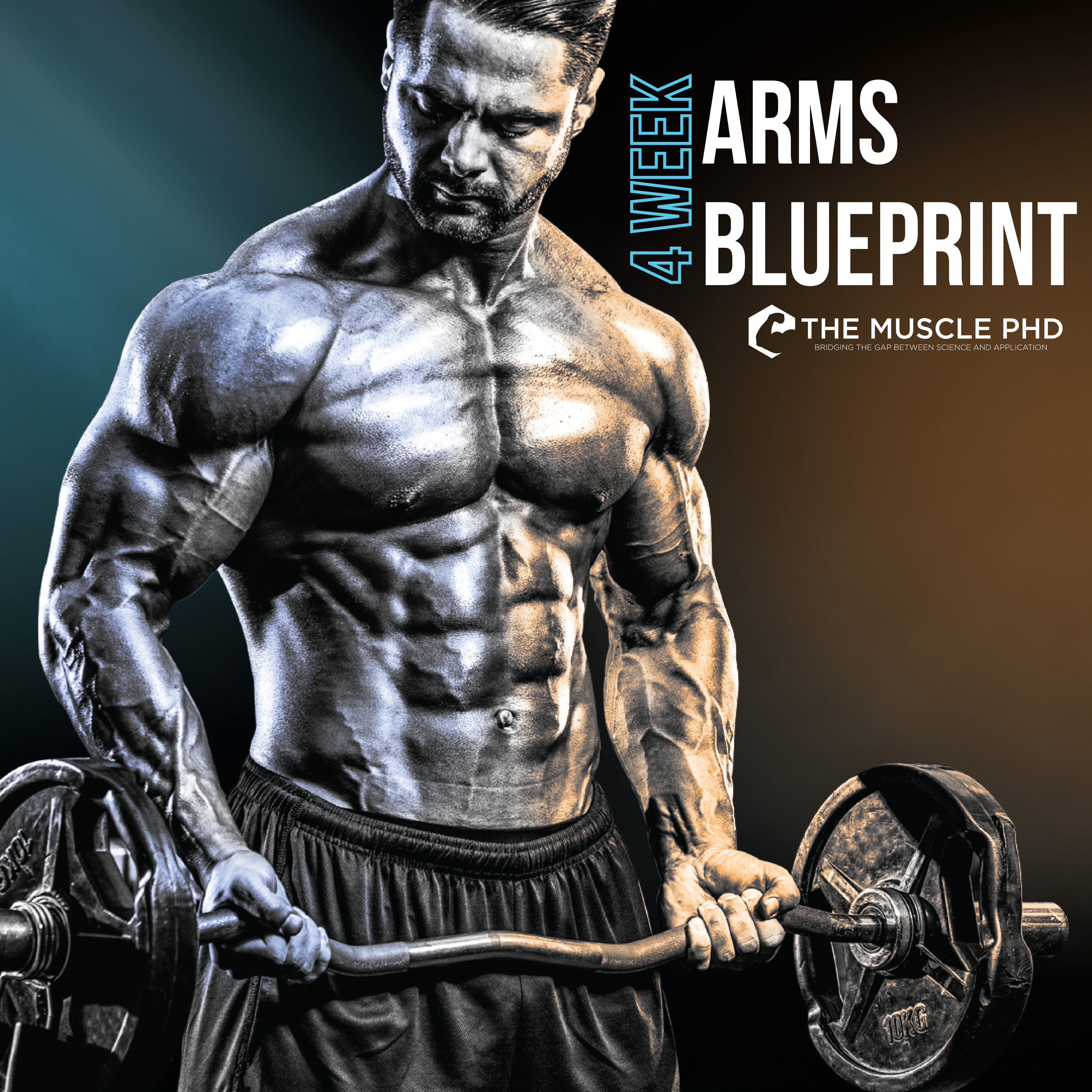Introduction
Ah, yes. The classic post workout meal. The proverbial pie cooling on the ledge of the anabolic window. The constituents of this meal can greatly impact your recovery and set you up for success in your next workout if done correctly. However, subpar nutrition at this time can impair muscle protein synthesis and glycogen replenishment and may render you sluggish and unmotivated in your next gym session. Let’s grab a fork and dig in to what a post-workout buffet should look like.
Hydration and Electrolytes
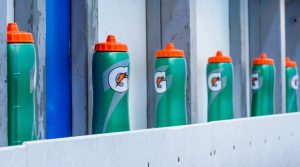 The main objective of the post-workout meal is to replace what was lost during the training session (25). During an intense workout, a dedicated bodybuilder can lose over 3-liters of sweat and over 3-grams of sodium (17). This creates an immediate need for both water and sodium replenishment as the muscle cell needs both water and sodium for proper function and fluid balance (17). Dehydration has been linked to several negative exercise factors (16,19,32) so making hydration a major component of post-workout nutrition is essential. One of the best ways to maintain proper hydration is by drinking 16-fluid ounces of water an hour before, every hour during, and within an hour after your workout (20). This helps ensure that water isn’t inappropriately shed during your workout and is at least somewhat replenished following training. You can further your hydration effectiveness by imbibing 3.7-liters of fluid per day as a male and 2.9-liters per day as a female (17). An even more accurate, but difficult, hydration assessment is to shoot for 1-liter of fluid for every 1000-calories burned throughout the day (17).
The main objective of the post-workout meal is to replace what was lost during the training session (25). During an intense workout, a dedicated bodybuilder can lose over 3-liters of sweat and over 3-grams of sodium (17). This creates an immediate need for both water and sodium replenishment as the muscle cell needs both water and sodium for proper function and fluid balance (17). Dehydration has been linked to several negative exercise factors (16,19,32) so making hydration a major component of post-workout nutrition is essential. One of the best ways to maintain proper hydration is by drinking 16-fluid ounces of water an hour before, every hour during, and within an hour after your workout (20). This helps ensure that water isn’t inappropriately shed during your workout and is at least somewhat replenished following training. You can further your hydration effectiveness by imbibing 3.7-liters of fluid per day as a male and 2.9-liters per day as a female (17). An even more accurate, but difficult, hydration assessment is to shoot for 1-liter of fluid for every 1000-calories burned throughout the day (17).
As far as sodium goes, the average person loses about 1.15-grams of sodium per liter of sweat (17). A hardcore training session could easily result in 3-liters of sweat loss which leaves you in a 3.45-gram sodium deficit. The easiest way to get more sodium is through table salt – sodium makes up 40% of table salt by weight (17). 8.625-grams of table salt would be necessary to replenish sodium following an intense training session, so don’t be afraid to liberally salt your food and even grab a sports drink like Gatorade on your way out of the gym.
Carbohydrates
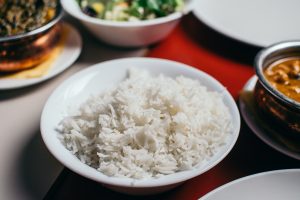 The next major nutrient burned during intense exercise is carbohydrate in the form of glycogen. Glycogen is the preferential energy source for intense exercise bouts lasting anywhere from 15-seconds to 2-minutes – or basically 99% of resistance training sets. As far as post-workout nutrition goes, carb type, timing, and amounts are all important for recovery (3,4).
The next major nutrient burned during intense exercise is carbohydrate in the form of glycogen. Glycogen is the preferential energy source for intense exercise bouts lasting anywhere from 15-seconds to 2-minutes – or basically 99% of resistance training sets. As far as post-workout nutrition goes, carb type, timing, and amounts are all important for recovery (3,4).
The type of carbs you consume after your workout completely depends on your goals. If you plan on hitting the same muscle group again within 24-hours, like an endurance athlete or Olympic weightlifter, consuming high GI carbs is the way to go. However, if you typically allow 48-72 hours between sessions for each muscle group, consuming low GI carbs is perfectly fine (4). The Glycemic Index is simply a measure of how blood glucose levels respond to certain foods – the higher the blood glucose response, the higher the GI (14). Foods that are higher on the GI scale include simple sugars that are found in things like sports drinks, sweetened cereals, and even candy. Research shows that high GI foods are more effective at replenishing glycogen immediately after exercise than low GI foods (4,8,15,24). Like we mentioned, though, if you’re not training within the next 24-hours, you’re probably fine consuming low GI carbs as they will eventually replenish glycogen well before your next session.
On that last point, carb timing is also important for maximum glycogen replenishment. Consuming carbs immediately after exercise has been shown to be slightly more beneficial than waiting 2-hours post exercise (8,12). Some may refer to this as a sign of the, “anabolic window” but it’s probably just more effective because you’re spending more overall time replenishing rather than staying depleted. Your goal should be to take in sufficient carbohydrate every 2-hours following your training session for at least 4-hours (7,8).
So what counts as, “sufficient carbohydrate?” Immediately after exercise you should shoot for 0.4-0.5 grams of carbohydrate per kilogram of bodyweight (2,7). If you’re trying to gain weight, take in this amount twice in the first 4-hours following training (6). An average bodybuilder should aim for a total intake of 3-5 grams of carbohydrate per kilogram of bodyweight throughout the day while a bodybuilder looking to gain significant weight will be better off consuming 5-7g/kg (7). For overall carbohydrate consumption, meal timing and proportions do not seem to have significant impacts one way or the other on overall glycogen replenishment outside the initial 4-hour window (3,9). Therefore, focus on whatever diet strategy allows you to hit your goal carbohydrate intake without ruining your day or bank account.
Protein and Timing
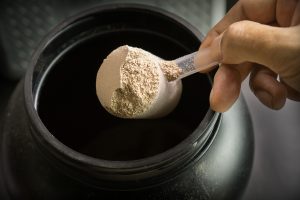 Now it’s time to discuss everyone’s favorite subject when it comes to post-workout nutrition: protein. Protein isn’t burned or depleted during exercise per se, but intense exercise will result in a negative overall protein balance (2). Consuming protein post-exercise, then, is important for bringing the body back into positive protein balance and driving protein synthesis. 20-grams of quality protein appears to maximize muscle protein synthesis and restores a net positive protein balance following exercise (31). Heavier or more experienced lifters might get greater MPS responses to higher protein intakes up to 40-grams per meal (13). Faster digesting proteins and milk-based proteins can maximize protein synthesis even quicker than others, so whey protein is probably the best idea if you’re choosing a shake for your post-workout protein (11,13).
Now it’s time to discuss everyone’s favorite subject when it comes to post-workout nutrition: protein. Protein isn’t burned or depleted during exercise per se, but intense exercise will result in a negative overall protein balance (2). Consuming protein post-exercise, then, is important for bringing the body back into positive protein balance and driving protein synthesis. 20-grams of quality protein appears to maximize muscle protein synthesis and restores a net positive protein balance following exercise (31). Heavier or more experienced lifters might get greater MPS responses to higher protein intakes up to 40-grams per meal (13). Faster digesting proteins and milk-based proteins can maximize protein synthesis even quicker than others, so whey protein is probably the best idea if you’re choosing a shake for your post-workout protein (11,13).
When it comes to the idea of the “anabolic window,” it’s actually much wider than initially thought. The anabolic window represents the span of time that muscle protein synthesis (MPS) is elevated following resistance training. MPS appears to peak about 3-hours post workout and remains elevated for 24-48 hours following training (13,26). Grab either a shake or meal within 3-hours of training (23) and try to keep protein intake consistent every 2-3 hours over the next 24-48 hours to keep MPS optimized during the recovery period (13). Chug 30-40 grams of casein protein before tucking in for the night to keep MPS elevated overnight (13).
As far as total protein intake goes, 2g/kg of bodyweight appears to be appropriate for most bodybuilders while 3g/kg of bodyweight might be best for optimizing body composition in a calorie deficit (13). Split this up into even doses every few hours throughout the day and focus the majority of your intake on whole foods with complete essential amino acid content – complete EAAs are necessary for optimizing protein synthesis (10,27,29). Only use supplements when you need extra protein to meet your goals or if your coworkers would rather you chug a shake than eat stinky steak and eggs at your desk every morning.
Fat
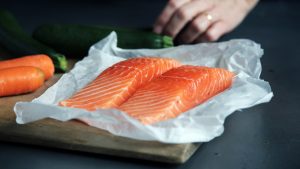 The last nutrient to consider when designing a post-workout nutrition plan is fat. If you’re not on a ketogenic diet, fat isn’t going to be a major part of planning out your overall diet as you’ll typically hit high enough fat levels when ingesting a high protein diet. Fat is still an important component of a bodybuilder’s diet as fat intake is highly correlated to overall testosterone levels (1,28,30). Aim for grabbing at least 20% of your total calories from fat and you should be set for proper fat intake (30).
The last nutrient to consider when designing a post-workout nutrition plan is fat. If you’re not on a ketogenic diet, fat isn’t going to be a major part of planning out your overall diet as you’ll typically hit high enough fat levels when ingesting a high protein diet. Fat is still an important component of a bodybuilder’s diet as fat intake is highly correlated to overall testosterone levels (1,28,30). Aim for grabbing at least 20% of your total calories from fat and you should be set for proper fat intake (30).
Conclusion
At the end of the day, post-workout nutrition is one of the best methods for promoting recovery. Water, sodium, and carbohydrate replenishment is the most important factor and should be addressed immediately after training. Protein can be taken anytime within the first 3-hours while MPS is peaking and then every few hours during the next 24-48 hours while the “anabolic window” is wide open for business. When concerning protein, overall intake is more important than timing so focus mostly on getting in 2-3g/kg per day (26). Fat intake is not overly important following exercise but is a key component in the big picture for optimizing testosterone levels. Design your post-workout nutrient needs based off of your body weight and goals and you’ll be set. Crush the weights then crush some food – enjoy.
References
- Adlercreutz, H., Hämäläinen, E., Gorbach, S. L., Goldin, B. R., Woods, M. N., & Dwyer, J. T. (1989). Diet and plasma androgens in postmenopausal vegetarian and omnivorous women and postmenopausal women with breast cancer. The American Journal of Clinical Nutrition, 49(3), 433-442.
- Beck, K. L., Thomson, J. S., Swift, R. J., & Von Hurst, P. R. (2015). Role of nutrition in performance enhancement and postexercise recovery. Open Access Journal of Sports Medicine, 6, 259.
- Burke, L. M., Collier, G. R., Davis, P. G., Fricker, P. A., Sanigorski, A. J., & Hargreaves, M. (1996). Muscle glycogen storage after prolonged exercise: effect of the frequency of carbohydrate feedings. The American Journal of Clinical Nutrition, 64(1), 115-119.
- Burke, L. M., Collier, G. R., & Hargreaves, M. (1993). Muscle glycogen storage after prolonged exercise: effect of the glycemic index of carbohydrate feedings. Journal of Applied Physiology, 75(2), 1019-1023.
- Burke, L. M., et. al. (1995). Effect of coingestion of fat and protein with carbohydrate feedings on muscle glycogen storage. Journal of Applied Physiology, 78(6), 2187-2192.
- Burke, L. M., Hawley, J. A., Wong, S. H., & Jeukendrup, A. E. (2011). Carbohydrates for training and competition. Journal of Sports Sciences, 29(sup1), S17-S27.
- Burke, L. M., Kiens, B., & Ivy, J. L. (2004). Carbohydrates and fat for training and recovery. Journal of Sports Sciences, 22(1), 15-30.
- Coyle, E. F. (1991). Timing and method of increased carbohydrate intake to cope with heavy training, competition and recovery. Journal of Sports Sciences, 9(S1), 29-52.
- Costill, D. L., Sherman, W. M., Fink, W. J., Maresh, C., Witten, M., & Miller, J. M. (1981). The role of dietary carbohydrates in muscle glycogen resynthesis after strenuous running. The American Journal of Clinical Nutrition, 34(9), 1831-1836.
- Farnfield, M. M., Breen, L., Carey, K. A., Garnham, A., & Cameron-Smith, D. (2011). Activation of mTOR signalling in young and old human skeletal muscle in response to combined resistance exercise and whey protein ingestion. Applied Physiology, Nutrition, and Metabolism, 37(1), 21-30.
- Hartman, J. W., Tang, J. E., Wilkinson, S. B., Tarnopolsky, M. A., Lawrence, R. L., Fullerton, A. V., & Phillips, S. M. (2007). Consumption of fat-free fluid milk after resistance exercise promotes greater lean mass accretion than does consumption of soy or carbohydrate in young, novice, male weightlifters–. The American Journal of Clinical Nutrition, 86(2), 373-381.
- Ivy, J. L., Katz, A. L., Cutler, C. L., Sherman, W. M., & Coyle, E. F. (1988). Muscle glycogen synthesis after exercise: effect of time of carbohydrate ingestion. Journal of Applied Physiology, 64(4), 1480-1485.
- Jäger, R., et. al. (2017). International society of sports nutrition position stand: protein and exercise. Journal of the International Society of Sports Nutrition, 14(1), 20.
- Jenkins, D. J., et. al. (1981). Glycemic index of foods: a physiological basis for carbohydrate exchange. The American Journal of Clinical Nutrition, 34(3), 362-366.
- Jenkins, D. J., Jenkins, A. L., Wolever, T. M., Vuksan, V., Rao, A. V., Thompson, L. U., & Josse, R. G. (1994). Low glycemic index: lente carbohydrates and physiological effects of altered food frequency. The American Journal of Clinical Nutrition, 59(3), 706S-709S.
- Judelson, D. A., Maresh, C. M., Anderson, J. M., Armstrong, L. E., Casa, D. J., Kraemer, W. J., & Volek, J. S. (2007). Hydration and muscular performance. Sports Medicine, 37(10), 907-921.
- Kenney, W. L. (2004). Dietary water and sodium requirements for active adults. Sports Sci, 17, 92.
- Kleiner, S. M. (1999). Water: an essential but overlooked nutrient. Journal of the American Dietetic Association, 99(2), 200-206.
- Maresh, C. M., et. al. (2006). Effect of hydration state on testosterone and cortisol responses to training-intensity exercise in collegiate runners. International Journal of Sports Medicine, 27(10), 765-770.
- Maughan, R. J., & Shirreffs, S. M. (2010). Development of hydration strategies to optimize performance for athletes in high‐intensity sports and in sports with repeated intense efforts. Scandinavian Journal of Medicine & Science in Sports, 20, 59-69.
- Moore, D. R., et. al. (2012). Daytime pattern of post-exercise protein intake affects whole-body protein turnover in resistance-trained males. Nutrition & metabolism, 9(1), 91.
- Phillips, S. M., Tipton, K. D., Aarsland, A. S. L. E., Wolf, S. E., & Wolfe, R. R. (1997). Mixed muscle protein synthesis and breakdown after resistance exercise in humans. American Journal of Physiology-Endocrinology and Metabolism, 273(1), E99-E107.
- Rasmussen, B. B., Tipton, K. D., Miller, S. L., Wolf, S. E., & Wolfe, R. R. (2000). An oral essential amino acid-carbohydrate supplement enhances muscle protein anabolism after resistance exercise. Journal of Applied Physiology, 88(2), 386-392.
- Roberts, K. M., Noble, E. G., Hayden, D. B., & Taylor, A. W. (1988). Simple and complex carbohydrate-rich diets and muscle glycogen content of marathon runners. European Journal of Applied Physiology and Occupational Physiology, 57(1), 70-74.
- Sands, W. A. (2016). Chapter 18: Thinking sensibly about recovery. Strength and Conditioning for Sports Performance, 451-475.
- Schoenfeld, B. J., Aragon, A. A., & Krieger, J. W. (2013). The effect of protein timing on muscle strength and hypertrophy: a meta-analysis. Journal of the International Society of Sports Nutrition, 10(1), 53.
- Tang, J. E., Manolakos, J. J., Kujbida, G. W., Lysecki, P. J., Moore, D. R., & Phillips, S. M. (2007). Minimal whey protein with carbohydrate stimulates muscle protein synthesis following resistance exercise in trained young men. Applied Physiology, Nutrition, and Metabolism, 32(6), 1132-1138.
- Tegelman, R., Åberg, T., Pousette, Å., & Carlström, K. (1992). Effects of a diet regimen on pituitary and steroid hormones in male ice hockey players. International Journal of Sports Medicine, 13(05), 424-430.
- Tipton, K. D. (2007). Role of protein and hydrolysates before exercise. International Journal of Sport Nutrition and Exercise Metabolism, 17(s1), S77-S86.
- Volek, J. S., Kraemer, W. J., Bush, J. A., Incledon, T., & Boetes, M. (1997). Testosterone and cortisol in relationship to dietary nutrients and resistance exercise. Journal of Applied Physiology, 82(1), 49-54.
- Witard, O. C., Jackman, S. R., Breen, L., Smith, K., Selby, A., & Tipton, K. D. (2013). Myofibrillar muscle protein synthesis rates subsequent to a meal in response to increasing doses of whey protein at rest and after resistance exercise–. The American Journal of Clinical Nutrition, 99(1), 86-95.
- Yamamoto, L. M., et. al. (2008). Effects of hydration state and resistance exercise on markers of muscle damage. The Journal of Strength & Conditioning Research, 22(5), 1387-1393.
From being a mediocre athlete, to professional powerlifter and strength coach, and now to researcher and writer, Charlie combines education and experience in the effort to help Bridge the Gap Between Science and Application. Charlie performs double duty by being the Content Manager for The Muscle PhD as well as the Director of Human Performance at the Applied Science and Performance Institute in Tampa, FL. To appease the nerds, Charlie is a PhD candidate in Human Performance with a master’s degree in Kinesiology and a bachelor’s degree in Exercise Science. For more alphabet soup, Charlie is also a Certified Strength and Conditioning Specialist (CSCS), an ACSM-certified Exercise Physiologist (ACSM-EP), and a USA Weightlifting-certified performance coach (USAW).




